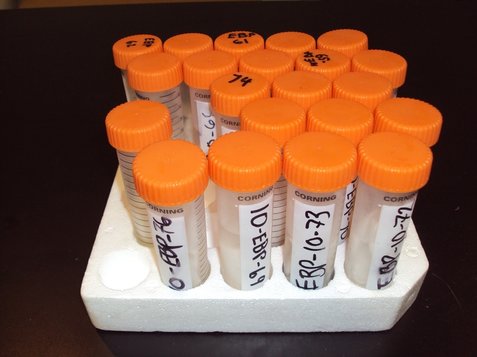At our state park nesting beach, we take part in a DNA Study that is directed by Dr. Brian Shamblin through the University of Georgia. This DNA project includes nesting beaches in North Carolina, South Carolina, Georgia and some parts of Florida. This project is now on it's 7th year and we have been finding out valuable information about our loggerhead sea turtles.
How it Works:

We take one egg from every nest and dispose of the contents. We place the egg shell into a vial of ethanol solution. Every few weeks, a member from DNR comes to collect our samples and deliver them to the lab. This photo shows our vials, which includes the year, our beach code and the number of nest on our beach. Once in the lab, they are tested to discover the mother turtle's DNA. This allows us to see where she has nested each season, where she has nested in the past 12 years as well as discover any sea turtle relation.
What we have discovered:
- Since the beginning of the project, there have been 1873 nests on our state park beach
- There have been 627 unique nesting females discovered that have visited our beach
Data from 2016:
In South Carolina, there were 6,204 samples, 1,781 identified nesting sea turtles (37% were new nesting females)
- It is estimated that the total nesting population in South Carolina is 5, 438 females!
- The common nesting intervals is 3 years
- Average move of remigrated females is 10 km latitude
- 50% of females came back to where they previously nested (within 1 km)
- 87% within 20 km
- But possible nesting sites are missing
- There have been 627 unique nesting females discovered that have visited our beach
Data from 2016:
In South Carolina, there were 6,204 samples, 1,781 identified nesting sea turtles (37% were new nesting females)
- It is estimated that the total nesting population in South Carolina is 5, 438 females!
- The common nesting intervals is 3 years
- Average move of remigrated females is 10 km latitude
- 50% of females came back to where they previously nested (within 1 km)
- 87% within 20 km
- But possible nesting sites are missing